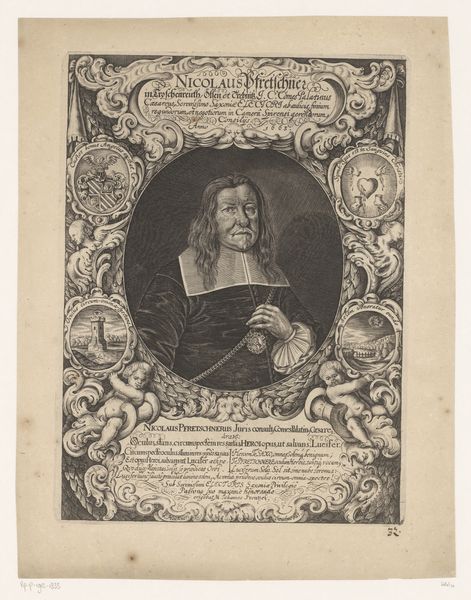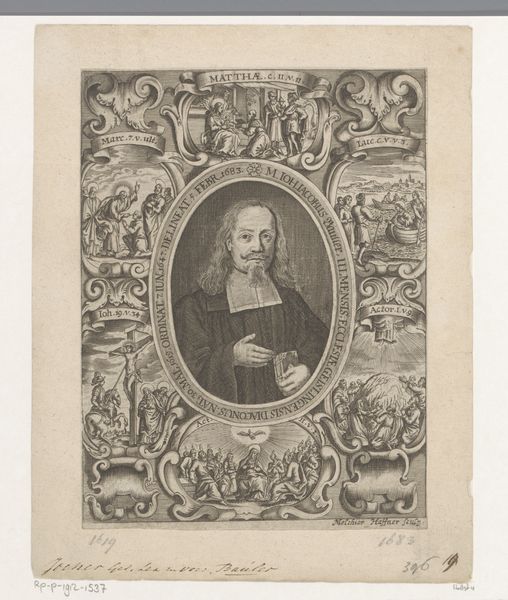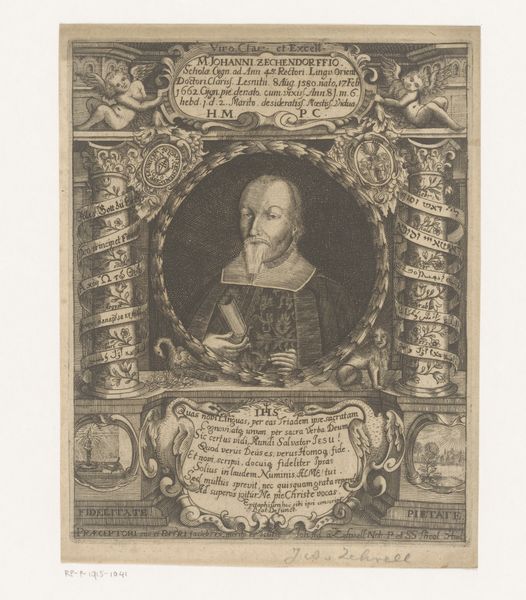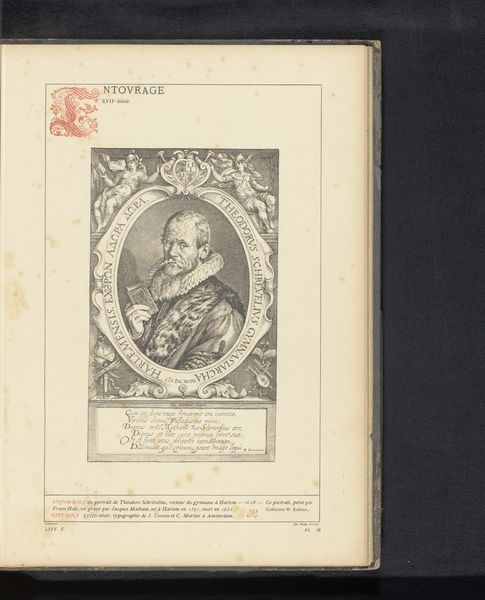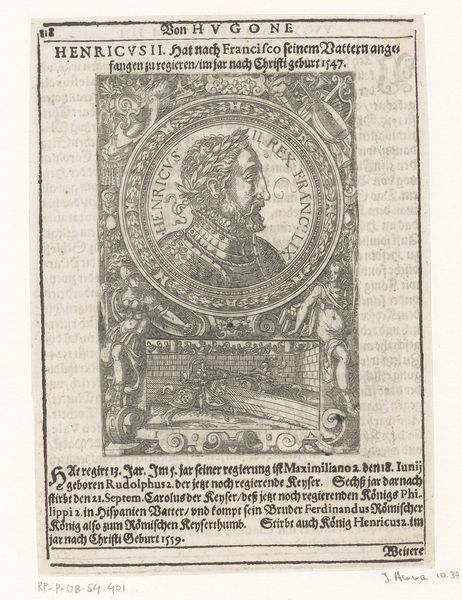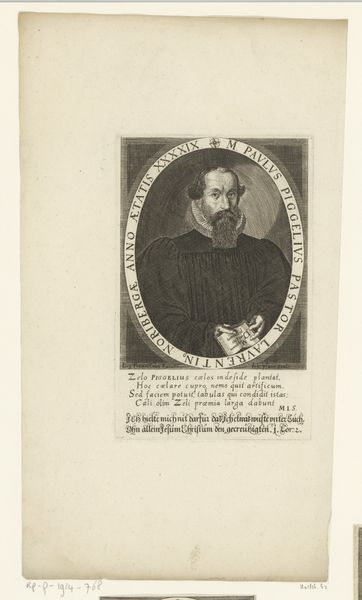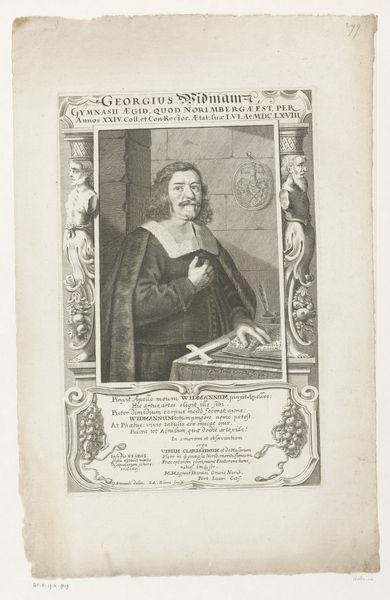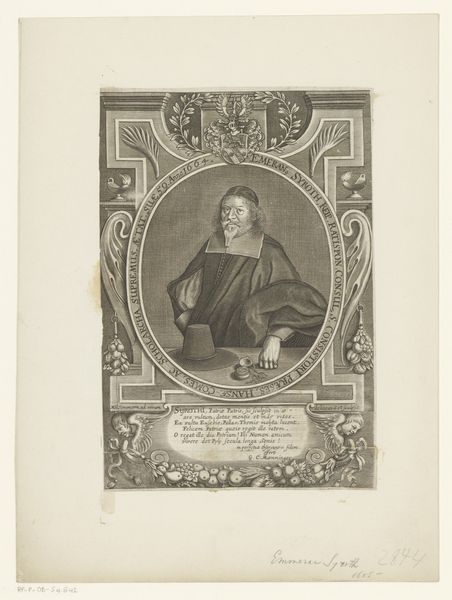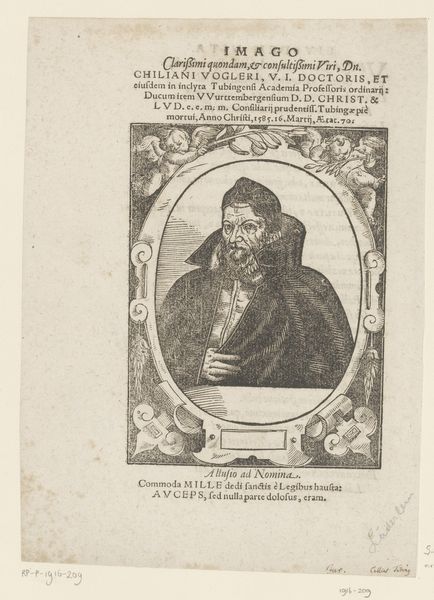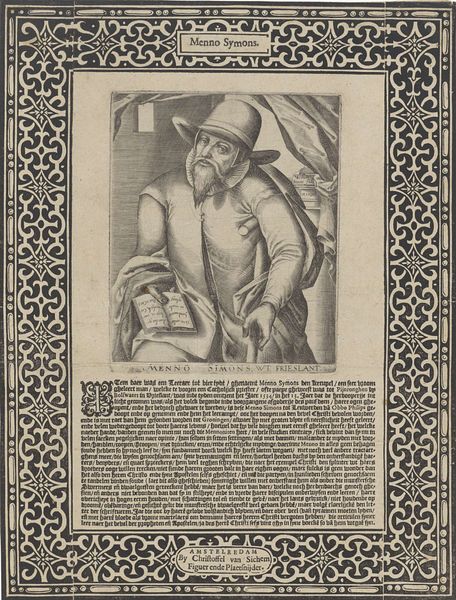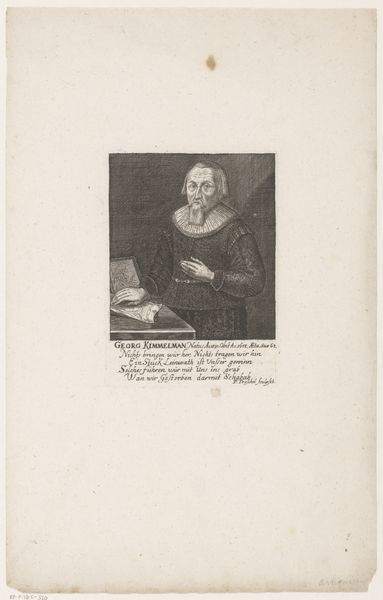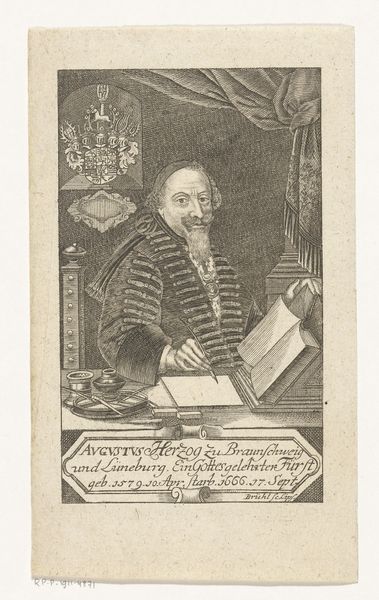
print, engraving
#
portrait
# print
#
old engraving style
#
11_renaissance
#
northern-renaissance
#
engraving
Dimensions: height 346 mm, width 259 mm
Copyright: Rijks Museum: Open Domain
This anonymous print of Maurits, Prince of Orange, was made in the Netherlands, in 1580, using engraving. The image creates meaning through its combination of text and image. Maurits is framed within an ornate border containing German text in a decorative frame of leaves. The text, a hymn, tells of Maurits' virtues and calls for victory in battle. The inclusion of the hymn points to the cultural significance of religious belief during the Eighty Years' War in the Netherlands between the Dutch and the Spanish. Institutions like the church and the army played a central role in the social and political life of the time. The print can be understood as a piece of propaganda, designed to bolster support for Maurits and the Dutch cause. It is a call to arms, blending religious devotion with military might. To understand the print better, historians would consult primary sources such as pamphlets, sermons, and military records. The meaning of art is contingent on social and institutional context.
Comments
No comments
Be the first to comment and join the conversation on the ultimate creative platform.
